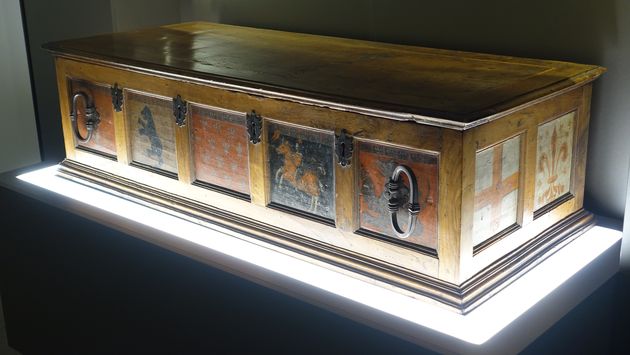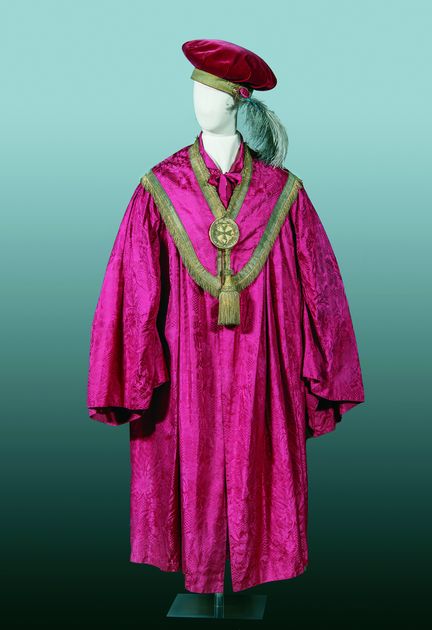In the centre of the shield are depicted the coats of arms of both the Medici and Toledo families, recalling the marriage between Cosimo I de' Medici and Eleanor as well as the political subjugation of the city of Prato to Florence. All around are the other coats of arms, set within vines, except for that of the municipality, which rests on a flower meadow. We find the institution of the Opera delle Carceri (Prison Work), recognisable by a grate, the Opera del Duomo (Cathedral Works) with the Sacred Girdle, the Spedale della Misericorda (Hospital of Mercy), with a bandaged child, and again the Spedale di San Silvestro (Hospital of St. Silvestro), the Ceppo Nuovo (New Stump), the Ceppo Vecchio (Old Stump) and, finally, Monte Pio.
Scholars have identified Zanobi Poggini's hand in the vivid colours of the pictorial palette and in the rendering of the weaving of plants, as well as being supported by the fact that the painter had numerous artistic commissions in the city. As an example only, mention should be made of Saint Ursula protecting the virgins, exhibited in this same museum, while his “Effusio sanguinis” (the shedding of blood) is preserved in Cathedral of Prato.










